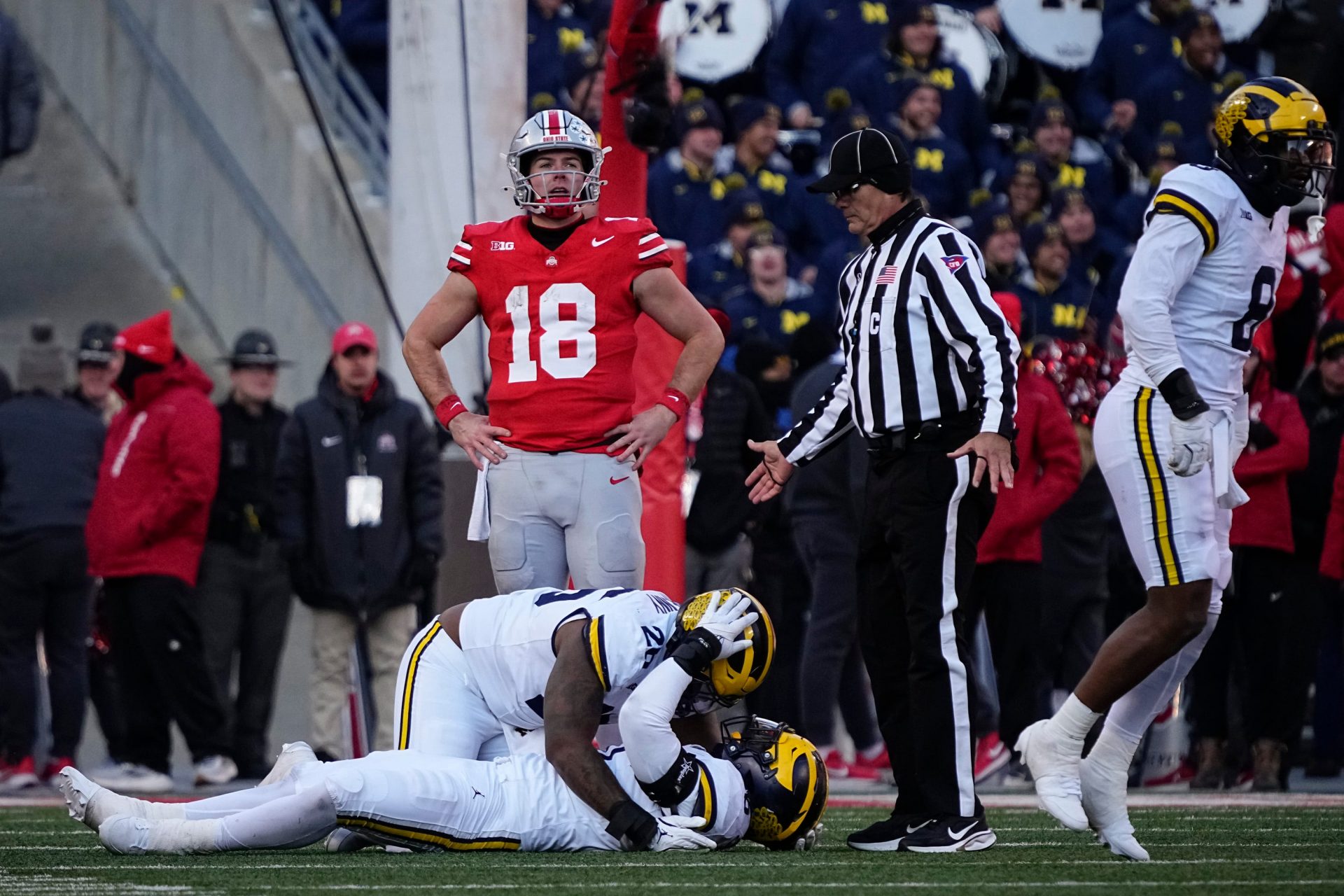The Michigan–Ohio State football rivalry, known simply as “The Game,” is nothing less than legendary. This rivalry has a jaw dropping 128 years of history and countless emotions and stories tied to it. With 120 meetings, Michigan leads the scoreboard with the current score being 62-51-6 (Ohio State’s 2010 win vacated).
From its roots in a 19th-century border dispute to modern battles shaping national championships, “The Game” at times transcends the gridiron and becomes an event that is very close to the citizens of both states. Below, we have shared everything you need about “The Game.”
Is ‘The Game’ Still the Most Powerful Rivalry in College Football?
In 2000, ESPN crowned Michigan–Ohio State the greatest North American sports rivalry, a placement that was repeated by Encyclopedia Britannica and Wiley’s ‘Rivals!’.
Its stakes often decide Big Ten titles, Rose Bowl berths, and national championship paths. From 1918 to 2024, the teams determined the Big Ten championship 22 times and influenced it 27 more.
The 2023 matchup, with 19.1 million viewers, was the most-watched regular-season college football game since 2011, only trailing 2006’s “Game of the Century” (21.04 million).
Historically, no other rivalry has managed to match The Game’s stakes and hype. Unlike Alabama–Auburn or Texas–Oklahoma, where outcomes sometimes hinge on regional pride, “The Game” frequently has ripples on the national level.
The 2006 clash, with No. 1 Ohio State edging No. 2 Michigan 42-39, secured a BCS title game berth. Michigan’s 2021-2023 wins, including a 42-27 upset snapping Ohio State’s eight-game streak, propelled the Wolverines to CFP appearances and a 2023 national title.
Ohio State’s 2024 loss, despite a 10-1 record, cost them the Big Ten title game, showing once again how much of a catalyst ‘The Game’ can be in College Football.
What are the Origins of ‘The Game’?
The rivalry’s roots trace to the 1835-36 Toledo War, a bloodless border dispute over the Toledo Strip, mainly fueled by economic ambitions for Lake Erie access. Michigan’s victory in gaining statehood and the Upper Peninsula pushed the tensions between the states further.
When the teams first met on October 16, 1897, Michigan’s 34-0 win kicked off the historical football rivalry, with the Wolverines going 12-0-2 from 1897-1912. The rivalry intensified with Ohio State’s rise. Francis Schmidt’s arrival in 1934 brought four straight shutouts (114-0 combined), birthing the “Gold Pants Charm” tradition for Buckeye wins.
The 1950 “Snow Bowl,” a 9-3 Michigan win in a blizzard, saw 45 punts and showed how serious the states are with this rivalry. The “Ten Year War” (1969-1978), pitting Ohio State’s Woody Hayes against Michigan’s Bo Schembechler, elevated “The Game” to mythic status.
Schembechler’s 1969 upset of No. 1 Ohio State (24-12) launched a decade where both teams were top-10 in nine of 10 matchups, with five top-five clashes. Schembechler’s 5-4-1 momentum ended with Hayes’ firing after a 1978 incident.
As of 2025, Michigan’s four-game win streak (2021-2024) has flipped the script on Ohio State’s 2012-2019 dominance (eight straight wins). The 2024 game, a 13-10 Michigan upset as 20.5-point underdogs, sparked a postgame brawl after a Wolverine attempted to plant a flag at midfield.
KEEP READING: Big Ten Analyst Makes a Massive Claim on the Future Value of Michigan – Ohio State Rivalry Game
Michigan’s Kalel Mullings, with 116 rushing yards, outshone Ohio State’s 77, continuing a 23-year trend where the team with more rushing yards wins. The game drew 14.9 million viewers, the lowest in seven years, raising concerns about viewer fatigue amid CFP expansion.
College Sports Network has you covered with the latest news, analysis, insights, and trending stories in college football, men’s college basketball, women’s college basketball, and college baseball!

